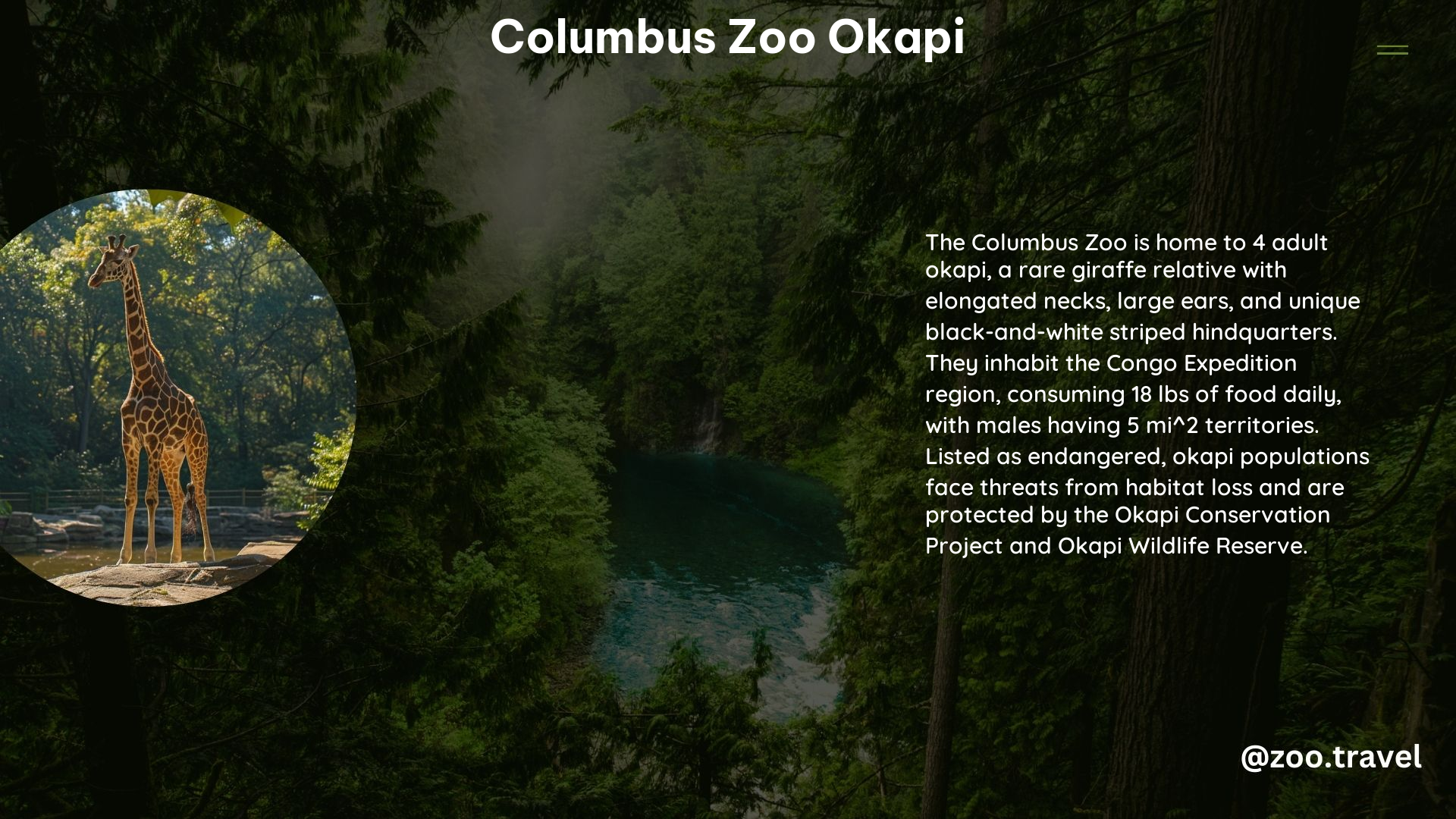The Columbus Zoo and Aquarium is home to a remarkable species of giraffe-like animals known as the okapi. These unique creatures, native to the Democratic Republic of the Congo, have captured the hearts of visitors and zoo enthusiasts alike. In this comprehensive blog post, we’ll delve into the fascinating world of the Columbus Zoo Okapi, exploring their characteristics, conservation efforts, and the zoo’s role in their protection.
The Okapi: A Unique Giraffe Relative
The okapi (Okapia johnstoni) is a remarkable species that is closely related to the giraffe. These elusive animals are known for their distinctive striped legs and reddish-brown coats, which help them blend seamlessly into the dense forests of their native habitat. With their long, prehensile tongues and unique adaptations, okapi are well-suited to navigate the challenging terrain of the Ituri Rainforest.
The Columbus Zoo Okapi: A Thriving Population

The Columbus Zoo and Aquarium is proud to be home to a thriving population of okapi, with four adult individuals currently residing in the zoo’s Congo Expedition region. The youngest of these, Matoke, was born at the zoo in 2012 and has since become a beloved member of the zoo’s animal family.
Matoke’s Journey
Matoke, the youngest of the Columbus Zoo’s okapi, has had an interesting journey. Born at the zoo in 2012, he was later transferred to the San Diego Zoo Safari Park in 2014, where he grew into a fully mature male weighing an impressive 560 pounds. In 2022, Matoke returned to the Columbus Zoo, where he now resides in the Congo Expedition area.
| Fact | Value |
|---|---|
| Matoke’s Birth Year | 2012 |
| Matoke’s Transfer to San Diego Zoo Safari Park | 2014 |
| Matoke’s Return to Columbus Zoo | 2022 |
| Matoke’s Current Weight | 560 pounds |
Matoke is known for his sweet personality and loves to receive neck and ear scratches from his favorite keepers. He has a big appetite, consuming 12 pounds of hay and six pounds of grain every day, with fresh lettuces being his favorite food.
Okapi Conservation Efforts
Okapi are classified as endangered by the International Union for Conservation of Nature (IUCN), with their native populations facing threats from habitat loss due to logging and illegal mining. The Okapi Conservation Project, established in 1987, has been working tirelessly to protect these unique animals and their habitats.
One of the key conservation efforts is the Okapi Wildlife Reserve, a World Heritage site that covers approximately 20% of the Ituri Rainforest. This protected area is crucial for the survival of the okapi, providing a safe haven for the species to thrive.
The Columbus Zoo’s Role in Okapi Conservation
The Columbus Zoo and Aquarium has played a significant role in the conservation of the okapi. In May 2020, the zoo celebrated the birth of a male okapi calf, the sixth such calf to be born at the zoo since 2003. This birth was the result of a breeding recommendation from the Species Survival Plan (SSP), a program coordinated by the Association of Zoos and Aquariums (AZA) to maintain the genetic diversity of threatened and endangered species in human care.
Sadly, in December 2020, the Columbus Zoo had to euthanize a 7-month-old okapi calf named Dini Darweshi due to irreparable rear leg injuries. Despite aggressive treatment and the efforts of specialists, the calf’s condition continued to decline, and the difficult decision was made to end his suffering.
Conclusion
The Columbus Zoo Okapi are a testament to the dedication and conservation efforts of the zoo and its staff. These remarkable animals, with their unique characteristics and endangered status, serve as a reminder of the importance of protecting our planet’s biodiversity. By visiting the Columbus Zoo and learning about the okapi, visitors can play a role in supporting the ongoing efforts to safeguard these incredible creatures and their habitats.
